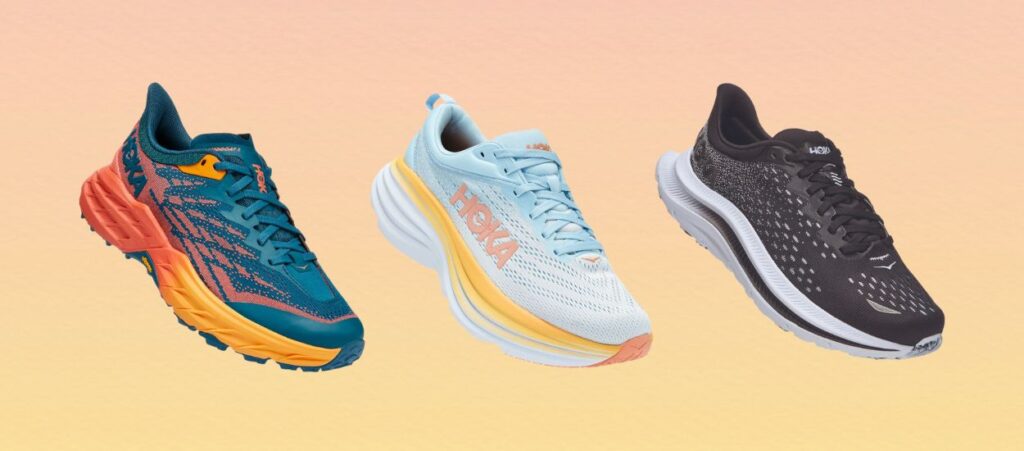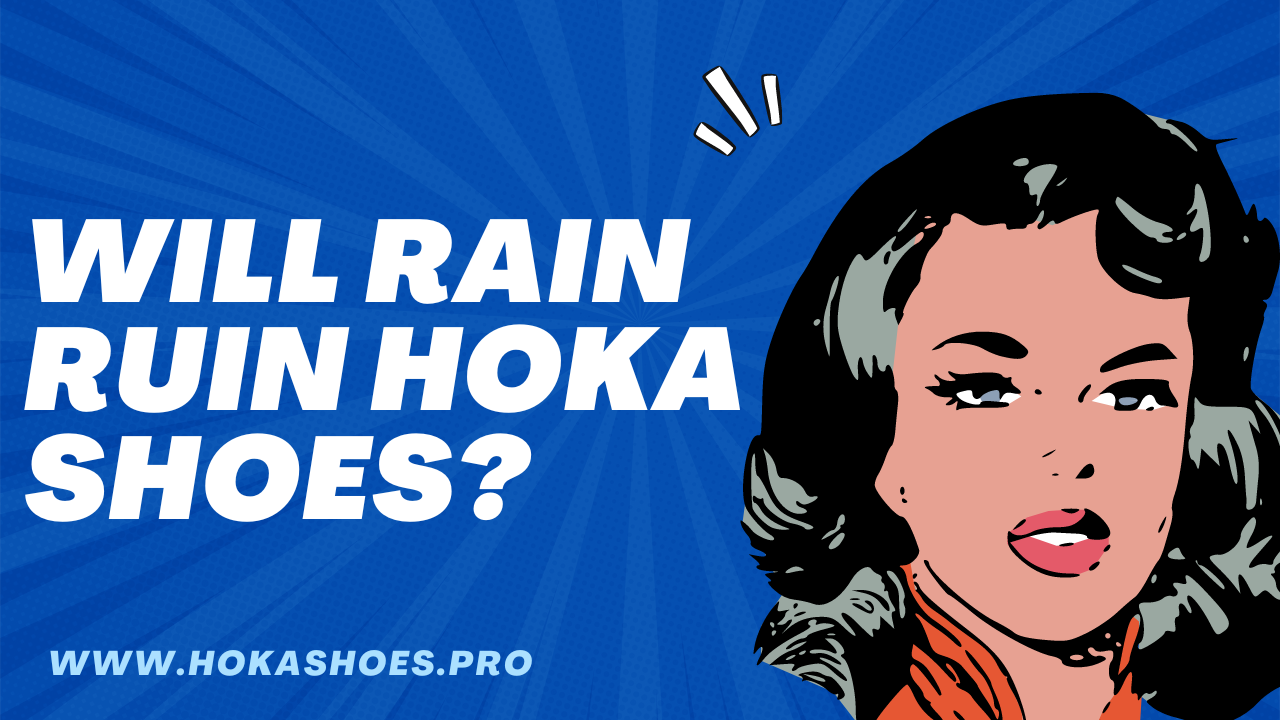Hoka One One shoes have become increasingly popular in recent years, especially among runners and hikers. With their thick, cushioned midsoles, Hokas are known for providing a soft and comfortable ride. However, some wearers wonder if getting their Hokas wet in the rain will damage them or shorten their lifespan. This article examines how rain and moisture affect Hoka shoes.
The Composition and Structure of Hoka Shoes
To understand how rain impacts Hokas, it helps to first look at what they’re made of. Most Hoka shoes feature ethylene-vinyl acetate (EVA) foam midsoles. EVA is a lightweight, durable foam that provides cushioning and absorbs shock. The outsoles are usually made of durable rubber with strategic grooves and patterns to enhance grip.
The uppers of Hokas vary more between models but often combine mesh fabrics with synthetic leather or suede overlays. Some models also have a water-repellant treatment. Reflective accents and padded collars are other common upper features. Overall, Hokas are engineered for comfort, support, and enhanced running economy.

Do Hokas Resist Water Well?
Compared to leather shoes, Hokas’ construction makes them more water-resistant. The mesh uppers allow more airflow but provide less structure and protection than solid leather or suede. However, many Hoka models do have synthetic leather overlays and treatments to repel water.
The EVA foam midsoles also resist water fairly well. EVA is non-porous and doesn’t absorb or retain much moisture. The rubber outsoles drain and dry quickly too. So while very wet conditions aren’t ideal, Hokas hold up better than canvas or fabric shoes. A little rain shouldn’t significantly damage them.
Impacts of Running In Wet Hokas
While occasional light rain is fine, repeated running in soaked Hokas can impact durability and performance. The constant moisture softens the adhesives and materials over time. The upper may lose structure, overlays can separate, and the foam midsole compresses quicker. Traction is also reduced when the wet rubber outsoles hydroplane across wet surfaces.
On long runs, very wet feet also raise blister risks. Plus, wet shoes won’t provide much warmth or breathability either. For competitive runners chasing personal records, soggy conditions slow pace too. So while light rain doesn’t ruin Hokas, extreme wetness does hinder performance. It’s best to avoid it whenever possible.
Caring for Wet Hokas
If your Hokas do get soaked, actively drying them extends their lifespan. First, remove the sockliner and laces. Stuff shoes with newspaper or towels to absorb excess moisture. Let them dry naturally – avoid direct high heat. Tumble drying can melt glue or warp EVA foam.
It’s also wise to re-treat leather or suede areas after they get very wet. Use a dedicated waterproofing spray to maintain protection. Check that adhesive seems intact around the midsole too. Re-glue any sections that appear loose or separated after drying. With some TLC, Hokas bounce back well from wet adventures.
Are Waterproof Hokas Worth It?
Given rain and moisture concerns, should you opt for waterproof Hoka designs? They do provide extra protection. Some key waterproof models include:
Hoka One One Tor Ultra Hi WP: Waterproof leather upper keeps feet dry.
Hoka Anacapa Mid WP: Mid-cut height and Gore-Tex lining prevent wetness.
Hoka One One Clifton Edge: Water-repellant mesh with internal bootie.
However, waterproofing comes with downsides too. Waterproof materials breathe less, so feet get hotter quicker. They’re often warmer in sunny conditions too. The designs are heavier as well. Traction suffers more on slick, wet terrain versus the soft sticky rubber of regular Hokas.
So weigh your priorities – do you mostly run in dry weather but train regardless of rain? Or will shoes get constantly soaked on adventures? Let your typical usage guide you. Waterproof Hokas provide insurance but involve comfort trade-offs.
Do Other Brands Resist Rain Better?
How do Hokas compare to other top athletic shoe brands in wet weather? Most running shoe companies use similar EVA foam midsoles now. And many rivals offer weatherized models too. For example, Saucony, Brooks, and Asics all sell respectable waterproof options for severe conditions.
In terms of regular trainers, Nike’s Flyknit uppers absorb more water than standard Hoka mesh. But Nike’s React foam holds up well, as does adidas Boost technology. On the trail front, Salomon and inov-8 use quick-drying mesh and grippier Contagrip outsoles to better tackle slick terrain and streams.
What about everyday all-weather kicks? Brands like Vivobarefoot, Merrell, and KEEN build boots and shoes purposely for hiking and rain. They resist moisture ingress far longer but prioritize toughness over light weight. Take your pick depending on running pace versus outright waterproofing demands.
Tips to Prolong Hoka Life In Rainy Weather
While Hokas resist rain fairly well, you can take further steps to extend their lifespan:
● Spray upper with water repellant before first wear and every 2-3 months.
● Check adhesives after drying out wet shoes. Re-glue any loose sections.
● Remove sockliner and laces to quicken drying if soaked.
● Stuff with towels or newspaper to absorb moisture faster.
● Avoid direct heat like radiators or hairdryers. Let shoes dry slowly.
● Consider a rotation with waterproof models like the Clifton Edge for very wet days.
● Run on damp but not flooded trails. Light mud is fine but deep puddles shorten the foam’s life.
● Wipe dirt from outsoles after each run once shoes dry out. Dried mud can hide cracks.
● Replace shoes roughly every 300-500 miles to maintain cushioning and support.
Conclusion
In closing, while Hokas resist light rain well, constant heavy soaking does impact their structure and performance over time. Waterproof versions provide extra protection for very wet conditions but involve some comfort trade-offs. With care and maintenance however, standard Hokas work well for running in most damp environments. Just be sure to actively dry shoes out instead of letting them sit wet. With smart rotation, drying, cleaning and replacement, Hokas can log reliable miles even when the heavens open up.
FAQs
Are Hoka shoes waterproof?
Most Hoka shoes are not inherently waterproof. Some models do have water-repellant treatments on the uppers, but they are still vulnerable to getting soaked in heavy rain. There are a few waterproof Hoka styles, like the Tor Ultra Hi WP and Anacapa Mid WP.
What happens if my Hokas get rained on?
Getting caught in light rain should not damage them. But repeated soakings can compromise the adhesives and foam over time. Traction suffers when the rubber outsoles get slippery. It’s best to limit exposure to heavy rain when possible.
How do I dry out my wet Hokas?
Remove the sockliners and laces, then stuff shoes with absorbent towels or newspaper. Let them air dry naturally – avoid direct high heat. Check that the uppers and midsoles are still firmly glued together once fully dried out.
Can I tumble dry my Hokas?
No, you should always air dry them at room temperature. The heat from a dryer can warp the EVA foam midsoles or cause adhesives and upper materials to melt.
Do other athletic shoe brands handle rain better?
It’s a mixed bag. Daily trainers from Nike, adidas and Brooks all use similar foam materials. Trail runners from Salomon and inov-8 are built more expressly for wet conditions. And shoes from Merrell and KEEN prioritize waterproofing above all else. Choose based on your needs.

4 thoughts on “Will Rain Ruin Hoka Shoes? [2024]”